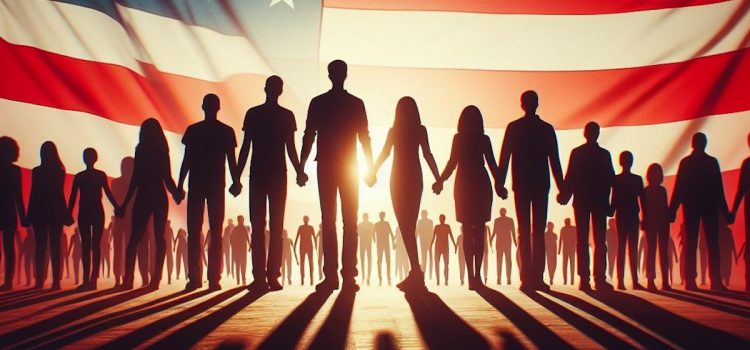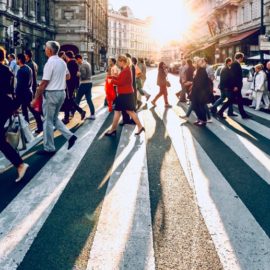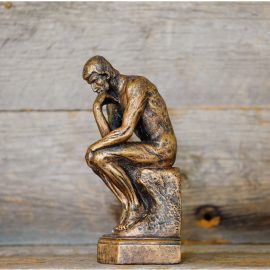
How did the Second Red Scare impact the American labor movement? In what ways did the Civil Rights Movement and the Black Power Movement try to achieve racial equality in America?
Howard Zinn explores 20th-century social movements in America from “the people’s” perspective. These movements, marked by defiance against oppression and systemic discrimination, exposed the complexities and challenges faced in the quest for societal change and equality.
Continue reading for Zinn’s take on this history from his book A People’s History of the United States.
20th-Century Social Movements in America (1945-1980)
Zinn outlines several significant 20th-century social movements in America: the decline of the labor movement during the Second Red Scare, the Civil Rights and Black Power movements, second-wave feminism, and more. Let’s take look at each movement.
The Second Red Scare (1945-1960)
In the years following WWII, elites purged members of left and labor movements in the Second Red Scare, explains Zinn. Seeing the rise of the communist bloc, the start of decolonization, and a strike wave in the US once the no-strike pledge ended, elites feared the possibility of a strong American left. They responded with mass firings, prosecutions, and investigations of leftists and labor activists under the guise of combatting the Soviet Union and communism. They also passed laws limiting the power and influence of unions. Zinn argues the Second Red Scare started the decline of the American labor movement, as organizations either cooperated with purges or had their influence reduced via legislation.
(Shortform note: In addition to direct anti-labor action, changes to the structure of American life weakened the labor movement. Specifically, scholars argue that the rise of suburbs and decline of cities in the 1950s and ’60s also contributed to the decline of the American labor movement. Suburbanization meant workers lived farther away from one another and their workplaces, meaning that they couldn’t gather and organize as easily. And, as people moved, so did jobs, going from cities with established unions and cultures of organized labor to suburbs and smaller towns without them.)
The Civil Rights and Black Power Movements (1954-1980s)
Despite Black participation in WWII and the booming post-war economy, Black Americans remained a legally segregated and oppressed underclass, Zinn explains. As a result, Black Americans organized on a larger scale than ever before to struggle for equality. Their struggle began with the Civil Rights Movement, a campaign for legal equality through peaceful, yet disruptive protests. From 1954 to 1968, the Civil Rights Movement pressured elites into outlawing racial segregation and passing a series of moderate reforms to protect Black rights.
However, Zinn argues, legal equality failed to significantly improve the lives of Black Americans, as racial discrimination, racist violence, and poverty were still commonplace. As a result, some Black Americans embraced the more radical and militant beliefs and methods of the Black Power Movement. Through leaders like Malcolm X and Huey Newton and groups like the Black Panther Party, the Black Power Movement advocated the use of violence in self-defense, class struggle, and achieving Black economic and political independence.
Violent white supremacist suppression prevented the Civil Rights and Black Power Movements from achieving genuine racial equality, Zinn argues. Police and white supremacist vigilantes like the Ku Klux Klan murdered and terrorized protesters and activists. Black leaders like Martin Luther King Jr. and Malcolm X were assassinated under mysterious circumstances, while others like Fred Hampton were explicitly assassinated by the FBI. Discriminatory anti-crime measures and the proliferation of drugs destroyed Black communities and their ability to organize, while increased media and political representation of Black Americans gave the false appearance of equality.
(Shortform note: Since the publication of A People’s History of the United States, Black Lives Matter (BLM) has emerged as the largest contemporary movement for Black equality. Unlike the Civil Rights and Black Power Movements, BLM is intentionally decentralized—consisting of nonhierarchical local chapters and organizations. According to BLM organizers, this decentralized structure makes it harder for their political opponents to shut down the movement by slandering or otherwise targeting one individual, as was the case for earlier Black equality movements.)
Other Significant Movements (1960s-1970s)
Zinn notes there were many other social movements in the ’60s and ’70s on behalf of the vulnerable and oppressed. The second-wave feminist movement, Red Power movement, gay liberation movement, and prison reform advocates sought to raise awareness of injustices and address unequal treatment of women, American Indians, homosexuals, and convicts, respectively. More broadly, movements and the culture of this era challenged conservative social attitudes of previous decades—beliefs about how to approach sex, relationships, work, and so on.
(Shortform note: The social movements of the ’60s and ’70s also coincided with an ideological and demographic shift among the American left. Student progressives like the Students for a Democratic Society argued that the university and student activism, not the labor unions and socialist political parties of the past, were the foundation of the left. This “New Left” tended to be younger, more interested in social justice, and less focused on class struggle and building labor power. Meanwhile, the new economic security of the post-war settlement combined with purges of left-wing unions meant that some white workers broke with the left altogether.)
Disillusionment and Scandal (1972-1975)
Zinn suggests the social discontent of the ’60s transformed into distrust of and alienation from politics in the early ’70s. Average Americans didn’t feel like they could impact change: the Vietnam War had lasted almost a decade despite its unpopularity, and political institutions didn’t significantly change even after major scandals. In the Watergate scandal, several of President Richard Nixon’s illegal political operations became public—and while Nixon eventually had to resign, he was never prosecuted and no significant anti-corruption measures were passed afterward.
A group of senators formed the Church Committee to uncover many past illegal CIA operations, coups, and assassinations for the first time—but the agency wasn’t dissolved or even significantly limited as a result.
(Shortform note: Evidence suggests that Watergate, the Church Committee, and Vietnam were just the start of a larger trend of American alienation and distrust in politics. This can be seen in public trust in government—from 1964 to 1974, the average percentage of Americans who trusted the government to do what was right fell from 77% to 36%. Besides temporary bumps in the ’80s and 2000s, this percentage has continued trending downward in the years since, sitting at 16% as of 2023. This suggests that Vietnam, Watergate, and the Church Committee were just the start of a larger trend of American alienation and distrust in politics.)






